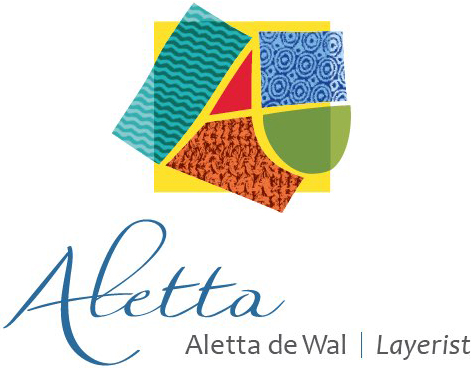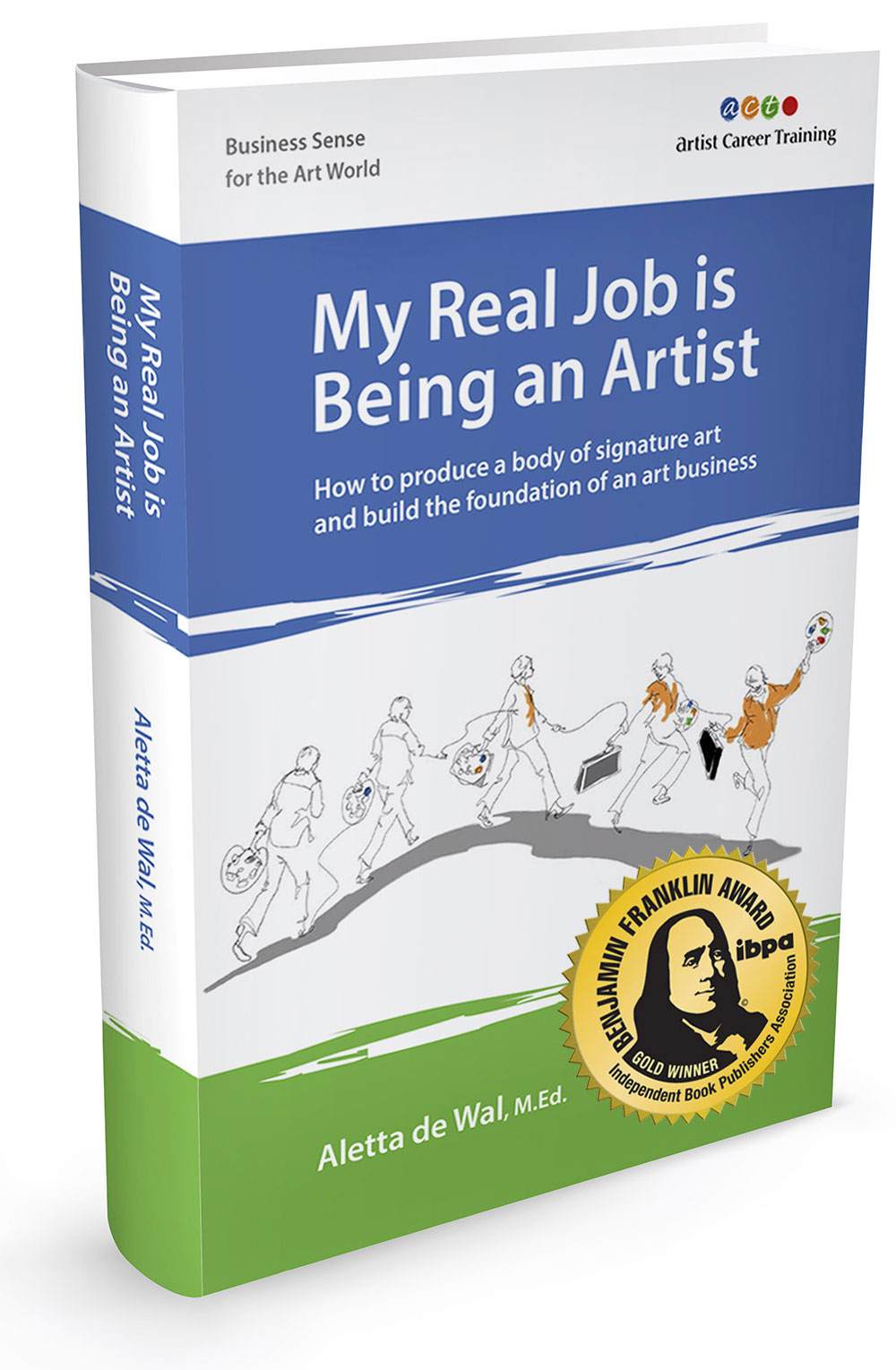Featured Artists:
My primary goal in these interviews is to inspire you with stories of people who make a living making art and who consider it a "real job." The artists I interview here have valuable tales to tell you about how to make a living from making art - and still have a life.
Scroll down for the list of other artists who have been featured.
Joel Armstrong: Wire & Installation Artist
The Evolution of an Art Career
Estimated reading time: 11 minutes
Joel Armstrong was raised in Corpus Christi, Texas, where he grew to love fishing, salt air, humidity and rust.
He attended Texas Tech University, and spent over 20 years as both an illustrator and graphic designer.
At the age of 39, while art director of "Group," a magazine for youth ministers, Joel returned to College for his MFA in drawing from Colorado State University (2001).
At CSU, Joel began to work in wire, and then became interested in Installation art. He has continued to do wire installation for almost 15 years after graduation. He uses baler wire, and has been rusting the wire since he first began bending and twisting the medium. He currently teaches drawing and illustration at John Brown University in Siloam Springs, Arkansas. He is married to an artist, with 3 adult children.
A.C.T.: What prompted you to start your professional art career? What makes an artist professional?
At a young age, I had the choice of taking violin lessons, or private painting classes - and I definitely went for the painting lessons. I continued the lessons every Saturday from Jr. High through High School.
My first show in my Sr. Year of high school sold out - a lucky break that has not yet been repeated in spite of all my exhibitions.
Although my background in College was fine art, I had a successful career as an art director, and freelance illustrator. I returned to Graduate School when in my 30s, and it was the best thing I could have ever done.
I began working with wire as a drawing medium, and have continued to do wire drawings until today. Most of my work has been produced for Installations.
Because I do installation art, I have a hard time associating professionalism with sales. For me, to be a professional artist is based on desire and motivation to continue making art that can speak to an audience.
 © 2015 Joel Armstrong “Springs” 4 x 7 ft aluminum
© 2015 Joel Armstrong “Springs” 4 x 7 ft aluminum
A.C.T.: What is your artistic direction? What is your “life’s work” as an artist?
I am very story based, and I have created installations that are based on personal stories, or have invited the stories of others. Every installation has a theme based on something from my past and the rust refers back, taking on a meaning of its own and becoming a vocabulary. It starts with a whole lot of drawings.
 ©2014 Joel Armstrong “Vintage Navy #1” 16” x 20” Graphite
©2014 Joel Armstrong “Vintage Navy #1” 16” x 20” Graphite
As I said, installation isn’t really done with the intention of sales, it is to reach an audience, invite them into your story, with multiple entry points … including sound, lighting, and hands-on interaction. I have always wanted to meet people with stories they can relate to, that may bring back memories and emotion - even though they may be my stories.
I mentioned that sales were not really the goal of the installation, so my reward was through the interaction of people, during or after the show has been completed. Over the years I have received so many verbal, or written responses on how my work has touched a viewer.
So, in terms of legacy, I just want to be known as someone who could create emotions, and bring back memories for people as they view my artwork.
A.C.T.: Where and when will you have a retrospective?
Funny you ask about a retrospective, I was invited to exhibit my work this summer in somewhat of a retrospective format, called “Milestones.”
The show covers my early paintings from my undergraduate work, my illustration work, wire drawings, assemblage, collage, rust and gold paintings, wire and paper sculpture, and several of the new aluminum pieces that are monumental.
So, a mini retrospective, and I didn’t have to die for it to happen!
A.C.T.: What is your business model and art business direction?
My work has not shown in commercial galleries because installation lacks wide commercial appeal. More installation is shown in performance venues, college art galleries, etc. where the venues provide an automatic audience.
In a departure form active installation art, recently, I have begun working on large 4 x 8 ft. aluminum pieces that are based on my wire drawings, or at least have the feel of the wire work. I create the drawings, and I have them laser cut from aluminum, and finished with a powder coating.
 ©2015 Joel Armstrong Geese 4ft Aluminum
©2015 Joel Armstrong Geese 4ft Aluminum
I recently finished my first commissioned public art piece, and I would like to begin connecting to more public sculpture pieces, or interior artwork.
Business model is new to me because I now have something to sell.
In terms of marketing, I do actively pursue exhibitions, stay current on social media, and keep my website updated. I am redoing my website that is much more media friendly, and making it a commerce site, as well.
A.C.T.: What "hats" do you wear in your whole life and how do you balance art, life and marketing?
I have been married for 33 years to my wife Sandy who is also an artist, freelance graphic designer. We have three grown children (all quite talented artists).
I am employed as an associate professor at John Brown University for the past 13 years, in a small town in Arkansas. I teach drawing, illustration, fine art, and mixed media.
There is really nothing consistent or typical about my life. I am bipolar as well as ADD, so concentration and depression are always an issue. (My thesis project was “Drawn and Quartered – A Different Frame of Mind.”)
I’m amazed at the amount of work I do finish, in spite of the distractions.
During the school year, I find it difficult to get much work done because much of my time is spent doing class assignments along with the students—so I spend free time entering shows, and preparing for any exhibitions that are coming up.
My summers are the more active times for getting work done, this year focusing on exhibitions, and the new aluminum pieces.
I allowed my health and relationships suffer in the midst of a busy schedule, so this past year I have let those take on a priority. My summer was busy working out at the gym two times a day with a trainer, and two 15-mile bike rides a day. My teaching schedule will compromise that. My wife and I are closer than we have been in years.
A.C.T.: What peak moments have you had as an artist?
My favorite experience and magical moments as an artist was when I was exhibiting an installation called “Emersion - the sign of Jonah” based on my childhood memories of nighttime fishing with my father and brother.
There were 200 wire fish, a 12-foot steel and rusted wire boat covered with fabric and filled with spotlights that served as a light source for the room. There were also sound effects like water hitting the side of the oat, clanging bells, slapping rigging from sailboats …
It was being exhibited in an Art Center, where they have plays, concerts, as well as exhibition space. The installation had sand on the floor that mirrored the shape and size of the boat, that I meticulously created rippled sand. It was too tempting for most people, and they couldn’t keep their hands off it to see if it was real. Several times a week, I would return and redo the sand.
Long introduction to the story…while waiting for a performance to finish, I took a place in a corner of the gallery to wait. A teenager had left the performance, and came in…without seeing me in the corner. He began to “swim” with the fish, following the figure 8 pattern from the piece that flowed through the room. Hand motions of swimming under water, rising and falling to be careful not to touch the suspended fish. Completely uninhibited, he was allowed to keep this up for quite a long time. Finally, he ended up lying on his back, looking up at the installation, and began to do the backstroke. He had completely let himself become absorbed by the installation, and special gift to me, for being able to experience that time with him. That was a great honor to watch.
 © 2000 Joel Armstrong “Emersion- The Sign of Jonah.”
© 2000 Joel Armstrong “Emersion- The Sign of Jonah.”
A.C.T.: How do you define success?
Money has not been a real sign of success with the installation. My success is through comments and praises from the audiences. My work gets a lot of press, and if I’m there, I get a lot of comments or people will send me e-mails.
As with teaching, it is the rare written comments from students that make the job rewarding. I have to keep them to remind myself I am making a difference. The same goes for my artwork.
A.C.T.: What obstacles have you encountered in your art business and how have you handled them?
When I lived in Colorado, there was a large art market and lots of venues. One of my more recent obstacles has been location, and lack of a thriving art market in Arkansas. The Crystal Bridges Museum is making some changes. People have their personal tastes in this area and wire is not their taste. They ask me about making images that relate to them.
I try to get my work out throughout the country in exhibitions, but a wire piece, out of context of the installation only has a small audience of those that might be interested.
I have been doing more commissioned pieces lately using silver wire, as well as getting back to mark making and drawing, using rust as a mark making tool. These pieces have proven to have a market that the wire has not had.
 ©2015 Joel Armstrong “Geese” Silver wire7 ft installation
©2015 Joel Armstrong “Geese” Silver wire7 ft installation
A.C.T.: What opportunities has a professional approach to your career brought you that you might otherwise not have had?
I am a perfectionist, and when I do installations I think of every detail possible. That’s been the success of what I’ve done. I think of every angle. There’s no stone unturned. I consider all possible access points and how the viewer will see the installation.
The biggest opportunity was the opportunity to exhibit the "Time for Dresser Drawers" work all across the country, and even London. Shipping was a nightmare with lots of customs issues. The audience couldn’t care less about the story but they liked the interactivity.
A.C.T.: Who are your role models and mentors? What is the best advice they’ve given you?
Joseph Cain taught me the ethics of continuing to paint no matter what else is going on. You have to produce a lot of art to get some good stuff. I do this with my students. It doesn't happen with one painting, so let’s do some more.
My first installation was called "Clotheslines", and it consisted of a days worth of laundry created out of rusted wire, displayed with backyard poles and sod covered floor (that starts out green and later looks rusted), as well as backyard sound effects such as the constant motion of a sprinkler, dogs barking, lawn mower, kids playing.

When doing a search for “clothesline” the name Liza Lou came up. She’s inspired me since then. She had done a backyard installation with grass, lawn mower, clothesline, picnic-table…all created with seed beeds. Her work was meticulous and every detail was covered.
After following her work, I realized that it was important for me to continue my perfectionism, and not allow a single detail to get left out.
The piece got a lot of press. Since I work with wire, it isn’t a stretch to be compared to Calder. I wouldn’t say my work is derivative of his at all, but his work ethic, and ability to continue to create in so many media has always been an inspiration. He was also like a little kid, and I kind of still think of myself in that way. My work is a form of play.
A.C.T.: What is your online marketing strategy?
I have a fairly good web presence, and it’s connected through Facebook, Pinterest, LinkedIn, as well as Behance.
Having sales possible through ecommerce from my website has made a difference.
My main competition for image space is Billy Joel Armstrong, an artist in his own right, Billy Joel the musician, Neil Armstrong as well as an occasional Lance Armstrong image.
A.C.T. How do you price your work? What is your art purchase policy?
Pricing has been difficult for me. I have storage spaces filled with installations made up of many individual pieces that need to be together.
As I move into sales with my Rust and Gold paintings, sales have been more regular, when I have the work in galleries, I usually have a link where they can go online and purchase the work from alternative spaces … that is when the gallery is not commercial, and there is no commission being taken by the gallery.
The pieces are quite detailed, and intricate, but they are also small and start around $1000. I try to keep the work affordable. I know as I enter the sculpture market with the new aluminum pieces, pricing is going to be a major issue, as well as the fact that once I have created the artwork, I can always have more laser cuts done. Those pieces are about four times as large so they will be priced higher. That will bring up issues much like printmakers deal with, what constitutes a limited edition.
A.C.T.: What legal measures do you take to protect your work? Have you had to take legal action?
Working with wire has kept copyright issues to a minimum. An image of the piece is nothing compared to the actual work. I’ve never had a problem.
A.C.T.: What advice would you pass on to emerging artists? to mid-career artists? who want to succeed in any economy?
I teach a business class for the fine art majors who are ready to present their final capstone exhibition. We start 3 months out and go over everything from elevator speeches, artist statements, consistency in the work being exhibited, and finally websites and social media presence.
I also prepare them for the fact that there is the possibility that they may have to supplement their lifestyles. Many of these students are considering grad school, as well. With the cost of education, I often discuss the possibility of waiting for a while. I was told to do that when I was young, but went directly into Grad School and I lasted a semester and a half. It wasn’t until I returned to grad school in my 30’s that I thrived, and also had life experiences to base my work on.
In terms of mid career artists, I think it is important to just continue to make artwork, no matter what the market is like. If it is really your passion, you will find a way to survive financially, just to feed your desire to create.
A.C.T.: How has the work we have done together at Artist Career Training http://wwww.ArtistCareerTraining.com benefited your life and art career?
We have worked together several times over the years, and each time I begin with great enthusiasm. You ask many great questions, and have always been thorough with your answers.
The uniqueness of my work, and distracted temperament has caused me to fumble. Now that I am doing work that is marketable, it all makes great sense, and I am once again excited with continuing.
The most gracious thing you have offered me is a belief in what I am doing, and continued encouragement. I thank you for that and will appreciate it forever.
Could you use some help making a decision about your next steps as a working artist and human being?
I’ve worked with over 4000 artists in groups and 450+ individually. Maybe you’ll be next?
P.S. If you need an accountability partner for your art business or someone to roll up sleeves to produce art marketing materials or work on your web site, just let us know. We have a whole team to help you. If you haven't already had one, start with a complimentary 15-minute conversation.
Other featured artists:
Joel Armstrong, Wire and Installation Artist
Eric Armusik, Contemporary Figurative Fine Artist
Peter Bragino and Kevin Corcoran, Painters & Collaborators
Peter Bragino, Multi-discipline, mixed-media artist, designer, treasure hunter, and soul searcher
Connie Bransilver, Fine Art Photographer
Connie Bransilver, C.E.O. "Just Do It" and "Gravitas" Chairman Nicholas Petrucci
Joshua Coffy, The Gift Prolific
Edd Cox, Artist-Entrepreneur
Patrice Federspiel, Watercolor Artist, 1st Interview
Patrice Federspiel, Watercolor Artist, 2nd Interview
Pat Fiorello, Painter
Pat Fiorello, her Book "Bella Italia"
Darryl Johnson, Sculptor
B.J. Katz, Meltdown Glass Art & Design LLC
Franck de Las Mercedes, Painter
Franck de Las Mercedes, The Artist as Alchemist
Anne Marchand, Painter
Bruce Marion, Painter & Illustrator, 1st Intervivew
Bruce Marion, Painter & Illustrator, 2nd Interview
Vickie Martin, Collages
Huguette May, Representational Still Life Drawings
Lori McNee, Painter and Twitter Powerhouse
Lee McVey, Pastel Landscapes
Nicholas Petrucci, Painter
Gayle Rappaport-Weiland, Painter
Thom Reaves, Painter
Karen Schmidt, Sculptor
Michelle Sirois-Silver, Textile Artist
Gary Smith, Urban Flash Mob Painting in Toronto, Canada
Gary Smith, Painter
Gary Smith, The Upside of an Artist's Fall From a Ladder
Julie Snyder, Scottish Figurative Painter
Julie Snyder, Scottish Painter and Workshop Leader, 2nd Interview
James Thatcher, Abstract Artist
John T. Unger, Firebowl Artist
Billhenry Walker, Sculptor














